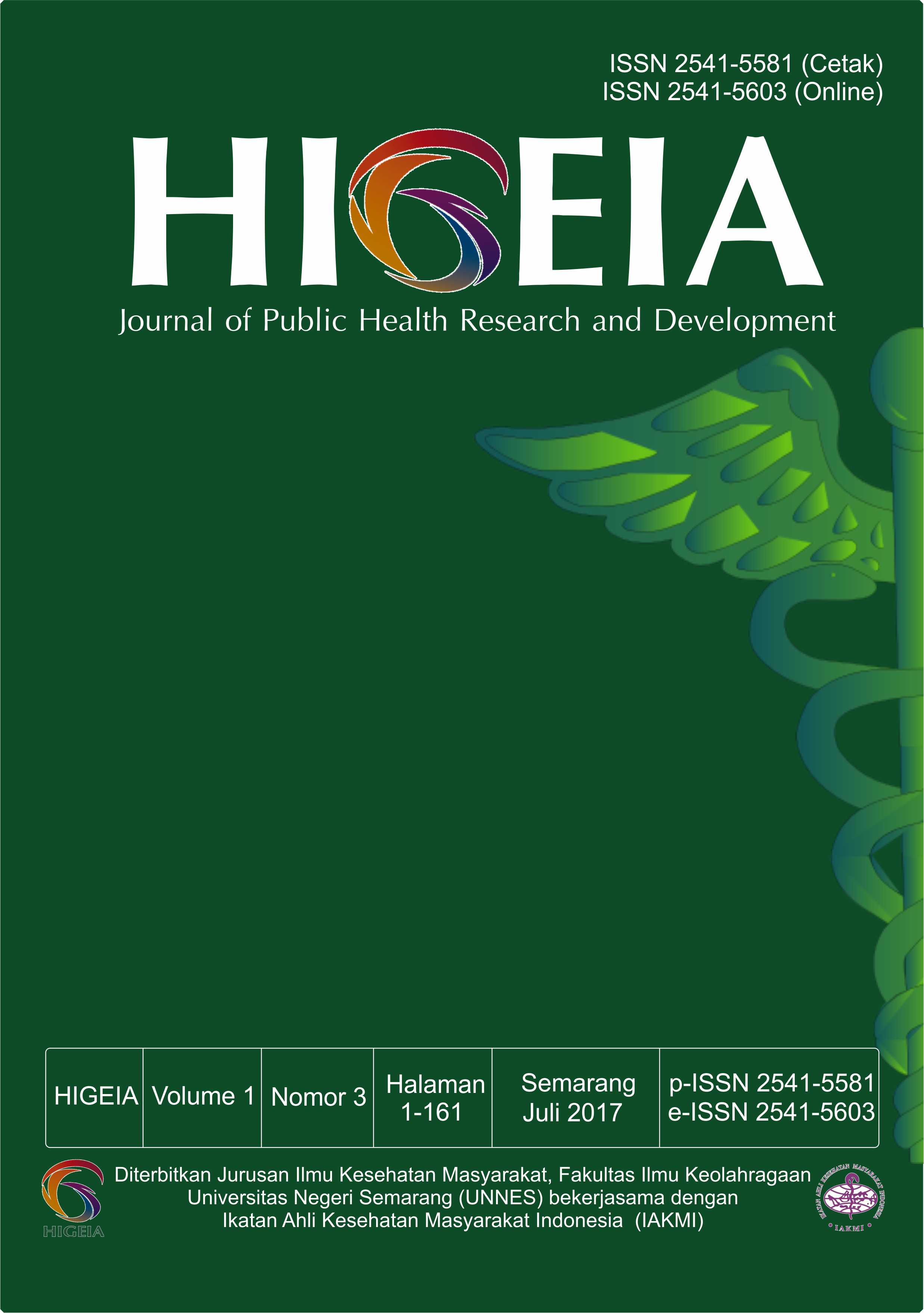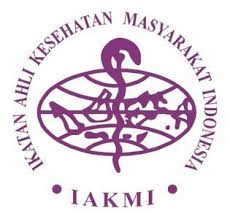Perkembangan Aedes aegypti pada Berbagai Kondisi Ph Air dan Salinitas Air
Abstract
Nyamuk Aedes aegypti merupakan vektor utama virus dengue. Pertumbuhan dan perkembangan nyamuk Aedes aegypti didukung oleh beberapa karakteristik lingkungan seperti kondisi lingkungan fisik, kimia, dan biologi. Perlu dilakukan studi untuk mempelajari sifat adaptasi nyamuk Aedes aegypti pada berbagai kondisi lingkungan untuk menekan laju pertumbuhan nyamuk. Jenis penelitian ini adalah eksperimen murni, dengan rancangan posttest only control group design. Sampel penelitian adalah betina gravid I dan larva Instar II. Analisis data menggunakan analisis univariat. Hasil pengamatan oviposisi nyamuk dengan persentase tertinggi yaitu pH 9 (22,75%) dan terendah yaitu pH 4 (5,93%). Persentase perkembangan larva tertinggi pada pH 9 (83,33%) dan terendah pada pH 4 (40,83%). Oviposisi tertinggi untuk salinitas air yaitu 5 gr/l (23,52%) dan terendah 18 gr/l (6,68%). Perkembangan larva terjadi pada 4 gr/l (74,16%), 5 gr/l (73,33%), dan 6 gr/l (49,16%). Simpulan, Aedes aegypti dapat melakukan oviposisi pada pH air 3 – 10 dan salinitas air 0 gr/l – 22 gr/l dalam penelitian. Perkembangan larva hanya terjadi pada pH air 4 – 10 dan salinitas air 0 gr/l – 6 gr/
Kata kunci: Aedes aegypti, pH, salinitas, pengembangan
Aedes aegypti mosquito is the main vector of dengue virus. The growth and development of Aedes aegypti mosquitoes is supported by several environmental characteristics such as physical, chemical, and biological environment conditions. It was necessary to study the adaptation of mosquitoes in various environmental conditions to suppress the growth rate of mosquitoes. This type of research was purely experimental, with a posttest only control group design. The sample of this study were female gravid I and larvae Instar II. Data analysis used univariate analysis. Result of female gravid I mosquitoes oviposition observation were the highest percentage was pH 9 (22,75%) and lowest was pH 4 (5,93%). The highest percentage of larval development occurred at pH 9 (83,33%) and the lowest larval development percentage was at pH 4 (40,83%). Female mosquito ovipositor with highest percentage was at concentration 5 gr/l (23,52%) and lowest was at concentration 18 gr/l (6,68%). The development of larvae in salinity water could occur at 4 gr/l (74,16%), 5 gr/l (73,33%), and 6 gr/l (49,16%). The conclusion is Aedes aegypti could do oviposition their eggs in several of pH water between 3 – 10 and salinity water 0 gr/l – 22 gr/l. The development of larvae only happened in pH water 4 – 10 and sainity water 0 gr/l – 6 gr/l.
Keywords: Aedes aegypti, pH, salinity, development





